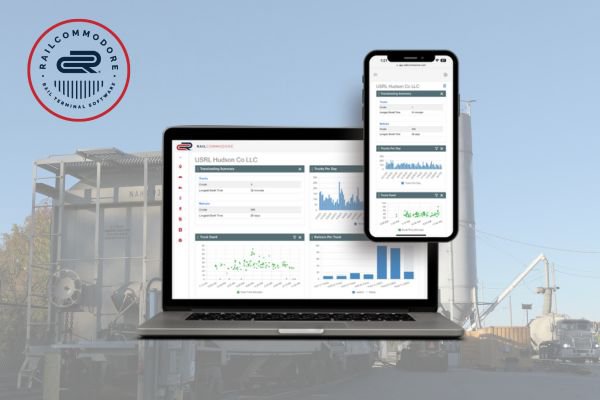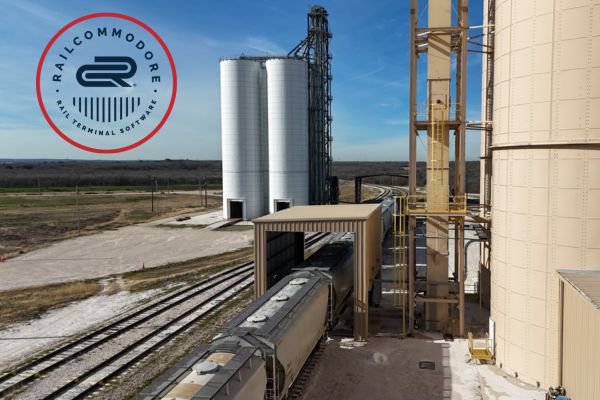Keeping track of railcars is difficult without the right tools. Delays, lost shipments, as well as unexpected costs add up quickly. Railcar tracking software helps you see where your cars are, avoid costly disruptions, and also improve planning. Determining if this software is the right solution for your business is an important decision.
Key Takeaways:
- Railcar Tracking Software: Helps companies locate and manage freight cars in transit. Prevents delays, misplaced railcars, as well as extra costs.
- Benefits of Real-Time Tracking: Improves planning, reduces waste, prevents delays, and also strengthens supply chain efficiency.
- Integration Challenges & Solutions: Centralized dashboards and APIs improve logistics compatibility.
- Future Trends: Both AI predictions and smart cargo monitoring as well as automation enhance rail logistics.

Why Railcar Tracking Software Is Important
Railcar tracking software helps businesses locate and manage freight cars in transit. It uses tools like Car Location Messages (CLM) reported using Automated Equipment Identification (AEI) readers to track movements. Without a system in place to compile this information, companies risk delays, misplaced railcars, and unexpected costs. They also fully rely on the railroads to provide data.
Rail logistics can be difficult to manage. Freight cars move across vast rail networks, often switching between multiple railroads. Without tracking, a company might not know whether a railcar is idle or moving. This can lead to late shipments, lost inventory, and also extra fees. Tracking software helps by providing updates on each railcar’s location and also its progress through the network.
One common issue is delayed information. CLM messages notify companies when a railcar reaches a new location, but they don’t provide continuous updates. The AEI tags scan railcars at checkpoints, confirming past locations but not predicting where the car is headed.
By combining these technologies, companies reduce uncertainty in their supply chains. Rail freight tracking allows businesses to plan for railcar arrivals, avoid congestion, as well as optimize rail yard operations. This leads to better efficiency, fewer extra charges, and improved customer service.
Businesses that use railcar tracking software make better decisions about rail logistics. They save money, reduce waste, and keep shipments on track. For more insights on how these systems improve logistics, check out this guide.
The Different Technologies Used in Railcar Tracking
Railcar tracking keeps shipments visible and helps prevent costly delays. Two main technologies track railcars: Car Location Messages (CLM) transmitted by Automated Equipment Identification (AEI) tags.
Car Location Messages (CLM) update when a railcar reaches key locations. These messages include the railcar number, event type, and timestamp. CLM data comes directly from the railroads or third-party providers. The biggest drawback is that CLM updates occur only at specific events. This means if your railcar is passing through a “black zone,” you are left in the dark until your railcar reaches the next reader.
Automated Equipment Identification (AEI) uses RFID tags to track railcars automatically. Every railcar in North America has an AEI tag with details like its number, axle count, and length. Wayside AEI readers scan these tags at checkpoints, providing updates. AEI is useful for confirming when a railcar arrives or departs from a facility. However, since AEI scans occur only at fixed locations, it does not provide continuous tracking.
How Real-Time Railcar Tracking Software Improves Supply Chain Visibility
Real-time railcar tracking software, though not based on continuous GPS tracking, leverages Car Location Messages (CLM) and Automated Equipment Identification (AEI) systems to provide precise shipment locations. CLM updates occur at key locations when an AEI tag passes its reader to confirm movements at checkpoints. This process reduces delays, improves planning, and lowers costs by offering timely updates. Without it, rail shipments can be unpredictable, leading to inefficiencies. Knowing where railcars are at crucial points helps supply chains run more smoothly and keeps customers informed.
How Real-Time Railcar Tracking Software Improves Supply Chain Visibility
Real-time railcar tracking software gives businesses precise shipment locations. This reduces delays, improves planning, and lowers costs. Without it, rail shipments can be unpredictable, leading to inefficiencies. Knowing where railcars are at all times helps supply chains run more smoothly and keeps customers informed.
The Role of Real-Time Tracking in Logistics Optimization
Real-time tracking reduces guesswork and keeps supply chains moving. Instead of relying on delayed updates, companies can access movement data as it happens. This visibility helps prevent delays and use railcars more efficiently. It also helps suppliers manage labor and equipment availability.
Benefits for Delays and Predictive Arrivals
Delays are inevitable, but tracking helps businesses manage them. With real-time data, companies can quickly identify when an issue occurs, adjust plans, as well as prevent costly disruptions. Predictive tracking analyzes past movement data to estimate arrival times more accurately, reducing waiting costs and improving scheduling.
How Tracking Data Improves Decision-Making in Rail Logistics
Accurate data leads to better decisions. Real-time tracking helps businesses manage rail networks more effectively by identifying inefficiencies, reducing empty railcar returns, and also avoiding unnecessary fees. With clear movement records, companies can negotiate better terms with rail carriers.
Real-time tracking software reduces waste, improves planning, and strengthens supply chains by integrating seamlessly with existing logistics systems for enhanced reporting capabilities. To explore how technology enhances logistics operations without rerouting or multimodal tracking features, check out this guide on rail logistics software.
The Best Railcar Tracking Software Solutions Available
When it comes to railcar tracking software, RailCommodore stands out as a great solution. This software significantly improves visibility and logistics efficiency by using both CLM updates and EDI confirmations to give the full picture of what’s going on with your railcar.
RailCommodore's software features a variety of reporting tools, drawing on both CLM updates and EDI confirmations to provide comprehensive tracking data. RailCommodore merges available resources for optimal accuracy in railcar reporting.
Additionally, our platform allows for customization to better integrate with your existing business systems. With flexible pricing options—whether per railcar, per ton, or monthly plans—RailCommodore ensures you get the best value tailored to your budget and tracking needs.
How Businesses Integrate Railcar Tracking with Their Logistics Systems
Businesses benefit from integrating railcar tracking with logistics systems. Without integration, tracking data remains isolated, leading to errors and delays. A well-connected system reduces confusion and improves efficiency.
Common Integration Challenges
Many companies struggle to connect tracking with broader systems. A major issue is data inconsistency. Railroads provide tracking data in various formats, making it hard to unify. System incompatibility is another challenge, as some business platforms can not support legacy software that is still used in the rail industry.
Success Stories
Many companies have improved rail freight logistics through better integration. A chemical manufacturer reduced railcar delays by 30% after resolving tracking inconsistencies. An auto manufacturer improved delivery forecasts, leading to reduced supply shortages.
Integrating railcar tracking improves visibility, reduces errors, and streamlines operations.
Future Trends in Railcar Tracking Technology
Predictive analytics goes beyond basic location tracking. It examines movement patterns to identify potential problems. When a railcar runs late, systems can determine the cause and suggest adjustments.
Smart cargo tracking combines AI and real-time data to monitor railcar activity. Sensors track temperature, pressure, and movement. This is useful for food, chemicals, and other sensitive goods.
Streamline your rail logistics with RailCommodore’s advanced tracking solutions. Contact us today to optimize your rail operations! Visit the RailCommodore website to learn more about how our railcar tracking software works.

Leave a Reply